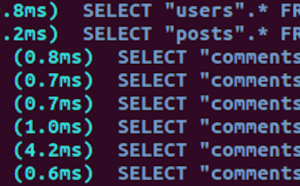In this short tip, I provide a few easy steps to set up an editable grid (or table) using Bootstrap and Shield UI Lite.
Shield UI Lite is an open source jQuery library that includes, among other components, a jQuery grid. The grid supports editing out-of-the-box, as well as sorting, grouping, and different column editors.
About Shield UI Lite
Shield UI is a web component development company that specializes in the design, development, and marketing of UI widgets for pure JavaScript development, as well as for development in ASP.NET, ASP.NET MVC, and Java Wicket. The company offers Data Visualization components, as well as a whole array of standard web development components, such as grids, barcodes – one and two dimensional, extended input components – such as numeric and masked textboxes, and many more.
The Shield UI Lite Suite is one of the newest open source libraries on the market and what is specific about it is that it contains a wealth of components, all of which are feature rich and mature. This includes the jQuery Grid, which supports all important web grid operations out-of-the-box. The component supports editing with either inline or standard edit form editing, as well as editing with an external form. Also supported is cell editing.
In addition to this, the Shield UI Grid has a built-in datasource component, which facilitates the binding to all types of data – from local JSON structures, to remote web services; the built-in DataSource also takes care of all delete, update and insert operations.
For data-heavy applications, the Shield UI jQuery widget offers an enhanced virtual scrolling feature significantly improves performance, even when working with millions of real data records. To see more examples of the component and its options, you can refer to the online demos or the documentation.
Using the Code
For the editable grid that we’ll be creating, I’m using a local data source in order to keep things simple. The source code for the libraries can be found on GitHub. The full sample code, along with all sample data used, as well as additional CSS is available in the CodePen demo.
The first step in setting up the layout is to use a standard Bootstrap container. In our case, this is a div with a Bootstrap panel nested inside. Since any standard web grid component usually hosts a lot of data, our layout spans the full width of the screen.
The code for this step is straightforward and looks like this:
<div class="col-md-12">
<div class="panel panel-default">
<div class="panel-heading">
<h4 class="text-center">Bootstrap Editable jQuery Grid
<span class="fa fa-edit pull-right bigicon"></span></h4>
</div>
<div class="panel-body text-center">
<div id="grid"></div>
</div>
</div>
</div>This is all the HTML needed to set up the sample. The next step is adding references to all the resources used in the sample, such as stylesheets, JavaScript files, and data.
The data used for the example is a standard JSON collection, which is loaded separately in order to be passed to the grid component. Using a local data source simplifies the setup. Additionally we need the stylesheet for the grid and the JavaScript for initializing it.
The inclusion of these resources is demonstrated below:
The CSS:
<link rel="stylesheet" href="shieldui-lite.min.css">The scripts:
<script src="shieldui-lite-all.min.js"></script>
<script src="shortGridData.js"></script>Setting up the Grid
The next step in the process is setting up the Shield UI Lite grid component. Once we have included the necessary resources, we can initialize it with some JavaScript in the document.ready handler.
There are two logical parts in describing the component. The first is handling the datasource for the data that will be visualized in the grid, and the other one is setting up the columns, which will be actually rendered, as well as any additional settings, such as sorting, hover effects, etc.
The Shield UI Lite Grid has a built-in dataSource property, which makes it easy to bind the widget to any data – local or remote. To link the dataSource to the JSON data, we use the data property and describe the fields, which will be fetched.
The code to achieve this is shown below:
dataSource: {
data: gridData,
schema: {
fields: {
id: { path: "id", type: Number },
age: { path: "age", type: Number },
name: { path: "name", type: String },
company: { path: "company", type: String },
month: { path: "month", type: Date },
isActive: { path: "isActive", type: Boolean },
email: { path: "email", type: String },
transport: { path: "transport", type: String }
}
}
}Enabling Editing
The next step in the process of setting up the application is choosing which properties will be available in the grid, as well as describing the columns, which will be rendered.
Each column can have additional properties, such as header text and width. The width property setting is not obligatory, but provides additional flexibility for distributing the overall layout.
The code for all the properties in the control is listed below:
rowHover: false,
columns: [
{ field: "name", title: "Person Name", width: "120px" },
{ field: "age", title: "Age", width:"80px" },
{ field: "company", title: "Company Name" },
{ field: "month", title: "Date of Birth",
format: "{0:MM/dd/yyyy}", width:"120px" },
{ field: "isActive", title: "Active" },
{ field: "email", title: "Email Address", width: "250px" },
{ field: "transport", title: "Custom Editor", width: "120px", editor: myCustomEditor },
{
width: "104px",
title: "Delete Column",
buttons: [
{ cls: "deleteButton", commandName: "delete",
caption: "<img src='source/delete.png' />
<span>Delete</span>" }
]
}
],
editing: {
enabled: true,
event: "click",
type: "cell",
confirmation: {
"delete": {
enabled: true,
template: function (item) {
return "Delete row with ID = " + item.id
}
}
}
},Setting Up a Custom Editor
The widget supports a number of handy editors out of the box. Once the control is put into edit mode, by clicking on any of the cells, the editor for the cell will be dependent on the type of values in this cell. For example, a numeric value will have a numeric input with increment and decrement buttons. A date column will have a Calendar input for easily picking a date.
There is also the option of supplying a custom editor for a column. For example, instead of having a standard textbox, we can have a dropdown with all the values for that column.
This can be achieved by attaching to the getCustomEditorValue event and passing a custom editor for each cell.
This is demonstrated in the following code snippet for the events:
events: {
getCustomEditorValue: function (e) {
e.value = $("#dropdown").swidget().value();
$("#dropdown").swidget().destroy();
}
}And the custom editor:
function myCustomEditor(cell, item) {
$('<div id="dropdown"/>')
.appendTo(cell)
.shieldDropDown({
dataSource: {
data: ["motorbike", "car", "truck"]
},
value: !item["transport"] ? null : item["transport"].toString()
}).swidget().focus();
}If you would like to review more information on the options in the grid widget, you can refer to this section of the documentation.
This completes our setup and the control is ready to use.
View the full working demo on CodePen
Be sure to click inside any of the content cells in the table/grid to see how the edit functionality works. You can view more examples on the usage of the Shield UI jQuery Grid component on the Shield UI website.
Frequently Asked Questions (FAQs) about Editable Grid with jQuery and Bootstrap
How Can I Customize the Appearance of the Editable Grid?
The appearance of the editable grid can be customized using CSS. You can modify the grid’s colors, fonts, borders, and other visual elements to match your website’s design. You can also use Bootstrap’s built-in classes to quickly style your grid. For more advanced customizations, you can use Shield UI Lite’s API, which provides a variety of options for modifying the grid’s appearance and behavior.
Can I Use the Editable Grid with Other JavaScript Libraries?
Yes, the editable grid is compatible with other JavaScript libraries such as AngularJS, React, and Vue.js. You can use these libraries to enhance the functionality of your grid, such as adding dynamic data loading, sorting, and filtering capabilities.
How Can I Add or Remove Rows in the Editable Grid?
You can add or remove rows in the editable grid using the grid’s API. The API provides methods for adding new rows, deleting existing rows, and updating the data in the grid. You can also use the API to programmatically select rows, which can be useful for implementing bulk editing or deletion features.
How Can I Validate User Input in the Editable Grid?
You can validate user input in the editable grid using Shield UI Lite’s built-in validation features. The library provides a variety of validation rules, such as required fields, number ranges, and email formats. You can also create custom validation rules to handle more complex validation scenarios.
Can I Export the Data from the Editable Grid?
Yes, you can export the data from the editable grid to various formats such as CSV, Excel, and PDF. This can be done using the grid’s API, which provides methods for exporting the grid’s data. You can also customize the exported data, such as including or excluding certain columns, or formatting the data in a specific way.
How Can I Load Data into the Editable Grid?
You can load data into the editable grid from various sources such as a local array, a JSON file, or a remote server. The grid’s API provides methods for loading data, and you can use these methods in combination with AJAX to load data from a server.
Can I Use the Editable Grid in a Mobile Application?
Yes, the editable grid is responsive and can be used in a mobile application. The grid’s layout will automatically adjust to fit the screen size, and you can also customize the grid’s behavior on different devices using CSS media queries.
How Can I Sort and Filter Data in the Editable Grid?
You can sort and filter data in the editable grid using the grid’s API. The API provides methods for sorting data by one or more columns, and for filtering data based on various criteria. You can also use these methods in combination with AJAX to implement server-side sorting and filtering.
Can I Use the Editable Grid with a Database?
Yes, you can use the editable grid with a database. You can load data from a database into the grid, and you can also update the database with changes made in the grid. This can be done using AJAX in combination with a server-side language such as PHP, ASP.NET, or Node.js.
How Can I Handle Errors in the Editable Grid?
You can handle errors in the editable grid using Shield UI Lite’s built-in error handling features. The library provides methods for displaying error messages, highlighting invalid fields, and preventing invalid data from being saved. You can also customize the error handling behavior to suit your needs.
 David Johnson
David JohnsonDavid Johnson is a Senior Full Stack developer, currently residing in London. For the past 16 years he's worked mainly in the field of web technologies. During the last 10 years, he has focused primarily on ASP.NET, along with HTML, JavaScript, jQuery and an array of third party components. Further professional interests include Data Visualization, Data Analysis and presentation, user experience and design, UI widgets and components.




